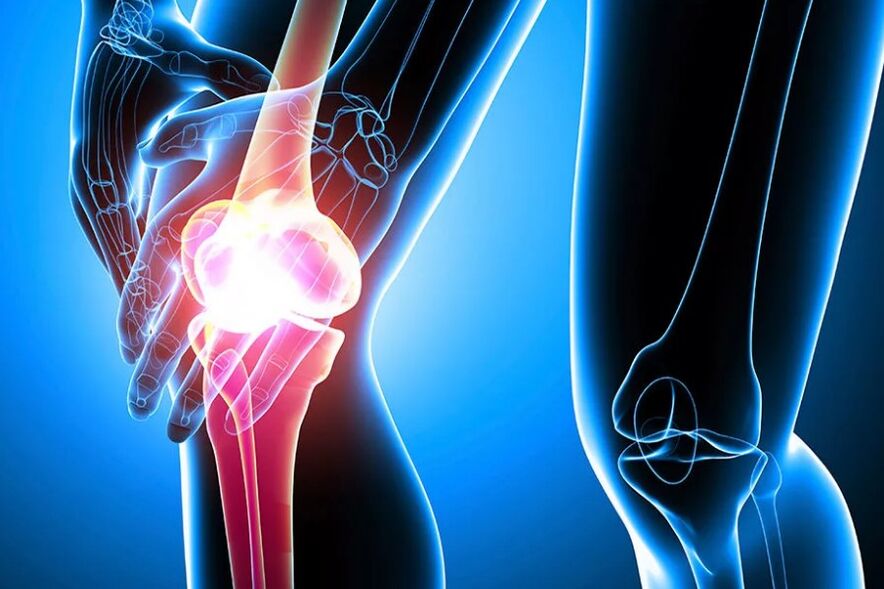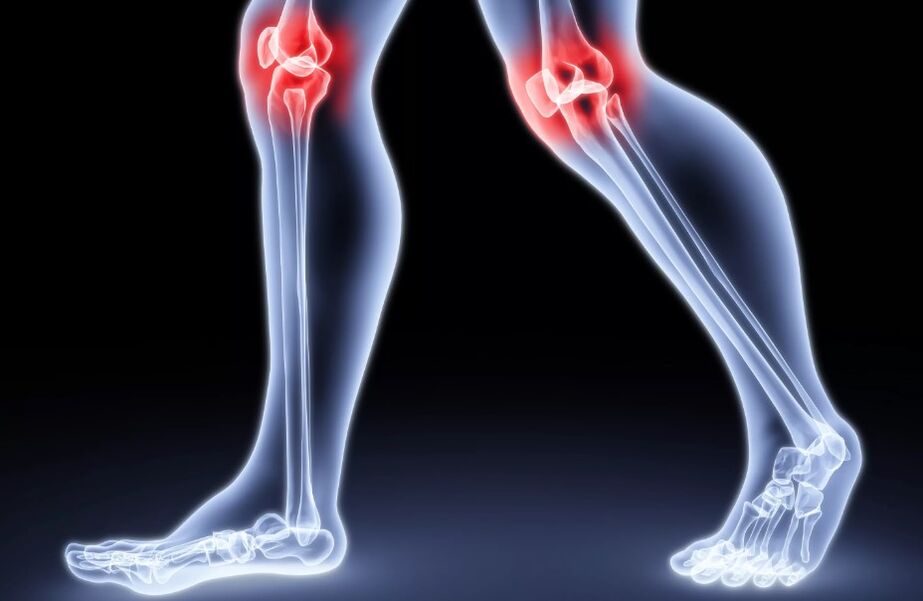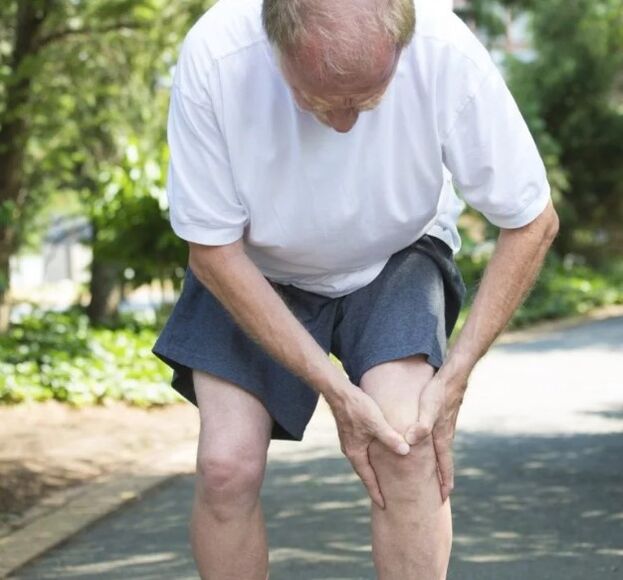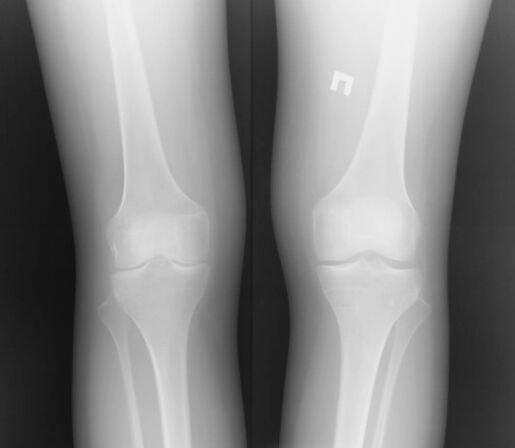Arthosis is a chronic joint disease in which the cartilage of the joint is gradually destroyed.When the cartilage is destroyed, changes are presented in the bone that the cartilage covers and in the joint capsule.

What does the word arthrosis mean and what are its synonyms?
The term arthrosis derives from the Greek word "Arthros" - the articulation and the "Ozis" suffix - non -inflammatory disease.However, this description is not entirely accurate, since with arthrosis in the articulation there are some inflammatory changes.In English -speaking countries, "our" "arthrosis in the vast majority of cases is called arthritis (arththis), that is, inflammatory joint disease (suffix itis), while usually we are called arthritis, joint damage in rheumatic, infectious, purer, purerlent diseases at the time of the articulation, etc.
in modern scientific articles, the term osteoartrosis is more often found (from the Greek words (from the Greek words."Osteo" - Bone, "Arthos" - articulation, that is, non -inflammatory disease of the joints and bones).Osteoartrosis is already writing.Is it really so bad? "In fact, arthrosis and arthritis are synonyms and your doctors have spoken of the same thing.
As we have already noticed at the beginning, with arthrosis (osteoarthritis), the cartilage is gradually destroyed and the bones are gradually involved in the process. With arthrosis in the bone, a section of sclerosis occurs (compaction), following the loss of shock.The edges of the bone (exostosis), which are often emitted "
Stages of salts " In fact, with ordinary arthrosis, there are no salts.weakly ", but now it is almost never used. deformare l'artrosi (osteoartrosi). Nei vecchi libri di medicina, a volte puoi trovare la frase "artrosi debolmente", ma ora non è quasi mai usata.

The exact causes of the development of arthrosis have been considered unknown for a long time, so there is another name for this disease - Idiopathic arthrosis that is, arthrosis, which has arisen for unknown reasons or spontaneously.Of course, scientists are no longer considered arthrosis for a mystery and the reasons for its development are known.More information on the causes of arthrosis, on what is primary and secondary arthrosis below.
Arthosis more often affects those joints that experience maximum loads (hip, knee, ankle joint, hand joints).The arthrosis of the hip joint is called Coxarthrosis (from the word "Coxa" - hip), the articulation of the ankle - Cruosteoartritte ("Cruuris" - lower leg), knee - gonartrosis ("Gene" - knee).In most cases, arthrosis affects both knee joints, while one of the joints can be more destroyed.In this case, the diagnosis sounds like bilateral gonartrosis with predominant damage to the articulation of the right knee (or left).
Often, not one, but several joints are influenced by osteoarthritis, therefore they use another term - Poliosteoartrosis This means that the defeat of three or more joints (two symmetrical, for example, both in the knee and others).In this case, the diagnosis usually sounds as follows: polite arthrosis with predominant damage to the knee joints (or one of them).
Why does the arthrosis of the knee joint occurs?
The arthrosis of the knee joint is different.Depending on the causes of its presence, primary and secondary arthrosis is distinguished.
Primary arthrosis of the knee joint
The joint cartilage is constantly destroyed and updated and normally these processes are balanced.With the age, the cartilage update slows down and the destruction of the cartilage, which is called the degradation or degeneration process, begins to prevail.
The process of synthesis and destruction of the cartilage is normally balanced.If the degeneration begins to prevail, the arthrosis of the knee joint will begin
In most cases, the degeneration of the cartilage, that is, the development of clay, occurs after 45-50 years, but sometimes arthrosis can develop in 20 years.Fortunately, the development of arthrosis in such young age is extremely rare.

People are subject to arthrosis of the knee joint to a greater or lesser extent.As a rule, if arthrosis occurs, then only at the age of 40-60, and if at the age of 60 there is no arthrosis, then most likely arthrosis will no longer be expressed (some degenerative changes in the knee joint are found in all the oldest people, but they are expressed differently).
It is important to note that if you take and make the X-ray for all the oldest people, for example, almost 60%will be 90%.Signs of arthrosis, but not all of them feel their knees as problems.This is particularly true for men who often already "serious" arthrosis does not show or causes minimal inconveniences.
Primary arthrosis occurs spontaneously, that is, without launch factors, therefore it is called idiopathic, which we have spoken previously.
So, we have already discovered that age is one of the main factors that determine the development of osteoarthritis, since the processes of cartilage degeneration begin to prevail with age.Each fourth person over the age of 55 suffers from arthrosis of the knee joints.But we also noticed that with age, arthrosis does not develop in everyone.So there are other reasons.Before listing them, we note that there is no main main reason.The arthrosis of the knee joint develops in terms of causes, while some play an important role, while others - less.
Floor. More often, the women of the knee joint are suffered by women.The exact reasons for this are unknown, but you can try to explain the following reasons.On average, women's life expectancy is greater than men and, consequently, the average elderly woman will express more degenerative processes.In addition, body weight in women is slightly higher on average.The size of the bone in women is smaller than men and, combined with a higher body weight, this leads to a higher pressure in the knee joint and, consequently, a more intense mechanical destruction of the cartilage.In the vast majority of cases in women, arthrosis begins to appear after the cessation of menstruation and, possibly, the lack of estrogen determines the development of osteoarthritis.Note that attempts to treat the arthrosis of the knee joint in women after menopause by estrogen are obviously undertaken, but so far they are not successful.
Weight. Of course, the greater the body weight, the greater the load to be transferred to the knee joints.In addition, overweight reduces physical activity and leads to the weakness of the hip muscles.For a more active synthesis of cartilage, movements are needed (without excess pressure) and with a sedentary lifestyle, the cartilage cartridge processes begin to prevail.The hip muscles are important stabilizers of the knee joint and with the weakness of these muscles, the movement in the knee joint becomes more painted, which accelerates the destruction of the cartilage.In general, these processes can be described as a vicious circle: the greater the body weight, the faster the joint of the knee is destroyed, the greater the pain, the more difficult it is to move, which leads again to an excess of body weight.

Vigious circle of obesity and arthrosis of the knee joint
On the other hand, only the arthrosis of the knee joint develops only among complete people: even those who do not have obesity can suffer from arthrosis.Once again, this is because arthrosis has no reason.
Legacy. It has long been noticed that the arthrosis of the knee joints is a "familiar" disease.If you have arthrosis or your parents, therefore, unfortunately, the probability of this disease is high with you.Scientists have discovered many gene characteristics that are responsible, for example, the individual characteristics of the main cartilage cartridge structure - collagen, but, unfortunately, these discoveries have no practical meaning, because we cannot influence the prevention or treatment of arthrosis.There is evidence that the inheritance of arthrosis is transmitted along the female line, which partly explains their great tendency to this disease.
The primary arthrosis of the knee joint does not occur only for a reason, but only for their totality.At the same time, the arthrosis of the knee joint is in one degree or another in almost all people over the age of 60, but the severity of arthrosis is very different and the arthrosis found in the radiography is not always manifested.In fact, it is even more difficult: not any pain in the knee joint in an elderly person or, moreover, at the age of 40-60 he will be accompanied by changes in the characteristic radiography of arthrosis.For example, scientists found that 76% of the elderly with pain in pain in the knees on the X -ray found arthrosis.
That is, no pain in the joint of the knee in an elderly person is necessarily the arthrosis of the knee joint. At the same time, among all the elderly people with arthrosis of the knee joints present in the radiography, only 81% will make a complaint on the pain.That is, the existing arthrosis does not always hurt. Strict of terms, there is no mandatory connection of the severity of pain with the severity of the arthrosis of the knee joint on the radiography.It happens that the changes to the X -ray are completely insignificant and the pain is strong and happens in the contrary: the articulation is completely destroyed on the X -ray and a person can go by bicycle, engage in yoga, work as Malarus and such cases we meet almost every day.
More often, the arthrosis of the knee joint starts with the internal department (medial).The blue arrow marked the external section of the joint and the interior - the interior of the joint.Pay attention to how the gap between the bones is already from the inside: the cartilage is not visible on the radiography, and it is this gap that means cartilage.In this case, practically no cartilage remained inside the knee joint and the bone has already burned on the bone.

With gradual abrasion of the cartilage from inside the knee joint, the leg begins to bend.Since arthrosis often affects both knee joints, that is, it is bilateral, both legs begin to be twisted and a deformation of the foot in the shape of O (Varina deformation) occurs.
Con graduale abrasione della cartilagine dall'interno dell'articolazione del ginocchio, la gamba inizia a piegarsi. Poiché l'artrosi colpisce spesso entrambe le articolazioni del ginocchio, cioè è bilaterale, entrambe le gambe iniziano a essere attorcigliate e si verifica una deformazione del piede a forma di O (deformazione varina).
Less commonly (in about 10% of cases), the external parts of the joint are influenced by arthrosis and in this case the X -shaped deformation begins (Valgus).
Of course, with the curvature, the load on the internal (in shape of O) or external deformation variants (in the shape of an X) increases even more and arthrosis will develop faster and irrevocably.External, but also between the cup of the knee (Rotula) and the Inter -Script of the femur.This option is called the head of the patello-domoral and occurs as a rule, due to
inclination, subluxation of a model, lateral hyperpression syndrome To which a separate article is dedicated on our website or after fractures of the patella , of which you can also read in a separate article. Secondary arthrosis of the knee joint
The arthrosis of the knee joint can also develop due to specific causes, in this case arthrosis is called secondary.Now we will briefly talk about the options for secondary arthrosis.
Post osteoarthritis -traumatic of the knee joint.
The lesions of the knee joint, of course, do not add a health joint and almost all, in one way or another, increase the risk of arthrosis. One of the most common lesions of the knee joint are the breaks of the Menisci, which is dedicated to a separate article on our website. Unfortunately, any person with the meniscus gap has ever had the probability of developing arthrosis.If a medial meniscus (internal) is damaged, then arthrosis will develop rather within the knee joint.And, consequently, if the external meniscus explodes, then arthrosis will develop in the external articulation of the joint.Note that the rupture of the meniscus does not always necessarily lead to arthrosis, the probability that its development is.Of course, the more damaged the meniscus, the greater the risk of arthrosis.

Another reason for the development of arthrosis of the knee joint is the breakdown of ligaments, for example a breakage of the front cruciate ligament.As a result of the rupture of the ligament in the joint, instability may appear, which, of course, will lead to damage to the cartilage and the development of clay.Of course, the damage to the cartilage depends on the degree of instability, which can be different.
A much heavier lesion to the knee joint is a fracture of the tibials of the tibia or the fracture of the femoral condanys if the fracture line enters the joint surface, then this fracture is called intra -articular.Almost every intra -articular fracture is accompanied by a movement of fragments and, therefore, the shape of the joint surface changes.The pass that appears following the turn inevitably leads to the progressive destruction of cartilage and the appearance of arthrosis.Of course, the more a heavier fracture, the greater the intraarticular fracture of the fragments, the more damaged the cartilage and the risk of arthrosis is higher.After the heavy multi -tank fractures of the Tibial Condiles, arthrosis develops in almost 100% of cases, despite the perfectly performed osteosynthesis surgery (elimination of bone fragments and fixing with screws, plates, etc.)

















































